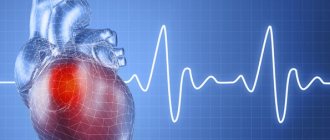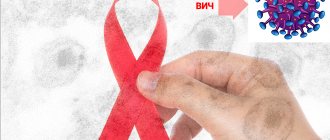Tension headaches (TTH) are one of the most common types of headaches in the world. Despite the fact that this formulation is not entirely familiar to most people, the prevalence of this disease is nevertheless very high. According to statistics, up to 70% of the world's population will experience a similar diagnosis to one degree or another during their lives. So what is a tension headache? How does it manifest itself, what are its symptoms? How is it treated? Let's find out more.
In the International Classification of Diseases, tension headache is an independent diagnosis. Synonymous with such formulations as muscle tension headache, psychomyogenic headache, stress headache, psychogenic headache, idiopathic headache.
By definition, tension-type headache is a bilateral diffuse headache with a compressive (squeezing) character of mild to moderate intensity. Refers to primary headaches, that is, to situations where there is no indication of other diseases that could cause similar symptoms. The patient may have other diseases of the body, but there is no connection between TTH and the disease (for example, 6 months ago the patient suffered a concussion, and now he has TTH, and both events are not related to each other).
Symptoms
With tension headaches, patients complain of aching, dull, monotonous, squeezing, squeezing pain. Sometimes the word “pain” is not even used; patients describe their feelings as discomfort, a “helmet”, “helmet”, “hat”, “cap”, “hoop” on the head that you really want to, but cannot take off. Most often the pain affects both halves of the head, but it can also be one-sided.
TTH can appear in certain areas (frontal, parietal, occipital), can migrate from one part of the head to another, begin at one point and “spread” throughout the head. The pain can be localized only in the head area, but often spreads to the neck and shoulder girdle.
The sensations may intensify when touching the head, putting on a hat, combing, or even a breeze.
Typically, the symptoms of tension headaches bother the patient during the day and very rarely occur at night.
Criteria for tension headaches have been developed:
- bilateral nature;
- compressive pain (squeezing, tightening);
- the severity of pain is mild to moderate;
- The headache is not worsened by normal physical activity (eg, walking down stairs, walking to work).
In order for a diagnosis of tension headache to be made, at least two of the above characteristics must be present.
In addition, it is believed that tension headaches are never accompanied by nausea or vomiting. If such symptoms appear, this is a different type of headache. Tension headaches may be accompanied by decreased appetite. The pain may increase from bright light or loud sound, and therefore such patients have light and noise sensitivity.
What does “mild or moderate pain” mean? The degree of pain is assessed using various scales. In particular, the use of a visual analog pain scale is quite common (when the entire range of pain sensations is located on a line 10 cm long. The beginning of the line corresponds to the absence of pain, and the end corresponds to the maximum possible, in the patient’s opinion, sensation of pain). The patient is asked to mark the place on the line that corresponds to the strength of the pain. For tension headaches, this is usually no more than 50% of the entire line (5 cm).
Depending on the duration of pain, the following types of tension-type headaches are distinguished:
- episodic;
- chronic.
Episodic tension headache is characterized by the following symptoms:
- the presence of at least 10 attacks of characteristic headache (meeting the criteria for tension-type headache);
- The duration of a headache attack is from 30 minutes. The number of days with such attacks is up to 15 per month (up to 180 per year).
That is, if over the past two months you have had 10 attacks of moderate compressive bilateral headaches that lasted 1 hour and were not aggravated by normal physical activity, and at the same time you experienced discomfort from bright light, then this means that you have tension headache.
Episodic TTH can be infrequent (no more than 12 days per year) and frequent (from 12 to 180 days per year).
Chronic tension headache is associated with the following characteristics:
- attacks of tension-type headache occur more often than 15 days per month (more than 180 days per year);
- the total duration of the disease is at least 3 months.
Typically, the severity of pain in chronic tension-type headache is greater than in episodic tension-type headache. Chronic TTH occurs if episodic TTH is left untreated.
TTH may be associated with tension in the pericranial or neck muscles. The pericranial muscles include the frontal, temporal, masticatory, pterygoid, trapezius, sternocleidomastoid, and occipital muscles. Muscle tension is clinically manifested by pain upon palpation (or pressure using a special pressor algometer device). It is possible to have tension-type headache without muscle tension; such pain is easier to bear.
Special conditions when immediate medical attention is required
Sometimes, after nerves, the headache hurts so much that a person is knocked out of the usual rhythm of life. If you cannot get rid of pathological symptoms on your own for more than two days, you must visit a healthcare facility.
In addition to a headache from nerves, there are several additional signs that indicate that a person requires hospital treatment:
- increased body temperature, chills;
- fear of bright light;
- nauseating feeling, vomiting;
- confusion;
- a nervous breakdown ended in fainting.
These symptoms may indicate the presence of more serious diseases that threaten life and health.
Who gets tension headaches?
What is it about this headache that it has even been identified as a separate disease? Mild or moderate headache... several times a month... Who hasn't experienced this? The fact of the matter is that most young people are faced with this diagnosis (mostly people aged 30-40 suffer), and more often these are mental workers. The higher a person's socio-educational level, the more susceptible he is to developing tension headaches. Most of the time, the professional activity of knowledge workers is associated with emotional stress, concentration, and fixation of attention. And all this in a sedentary lifestyle. The emerging symptoms do not allow such people to work efficiently, labor productivity drops, and their health deteriorates. Some resort to independent treatment, which is not always correct, which worsens the situation, provoking the transition of episodic tension-type headache to chronic.
Tension headaches cause disability for a huge number of the population. In the United States, it is estimated that due to GBH, annual budget losses amount to $10 billion, and in Europe – $15 billion. Not a little, isn't it?
Under what conditions does pain occur?
The main factor influencing the development of the condition, when a headache occurs after nerves, is psycho-emotional shock. However, the likelihood of the manifestation of painful symptoms increases significantly when the following unfavorable conditions are present simultaneously with stressful situations:
- Presence of cardiovascular pathologies. Nerves make the patient even worse, since in such conditions the blood vessels work in emergency mode. That's why my head hurts because of my nerves.
- Intense mental stress. Headaches after nervous tension go away only after proper rest.
- Pinched nerves in the cervical spine. This is facilitated by constantly working at the computer in the wrong position. Many people are interested in what to do if a nerve is pinched in the neck. To begin with, you should constantly monitor the correct position of your back at your desk. You should also take breaks every half hour of work.
- Depressive moods. In such conditions, the slightest trouble knocks a person out of his mental balance. This can lead to headaches from nerves.
Cervicogenic cephalgia - causes and symptoms of headaches
- Presence of cardiovascular pathologies. Nerves make the patient even worse, since in such conditions the blood vessels work in emergency mode. That's why my head hurts because of my nerves.
- Intense mental stress. Headaches after nervous tension go away only after proper rest.
- Pinched nerves in the cervical spine. This is facilitated by constantly working at the computer in the wrong position. Many people are interested in what to do if a nerve is pinched in the neck. To begin with, you should constantly monitor the correct position of your back at your desk. You should also take breaks every half hour of work.
- Depressive moods. In such conditions, the slightest trouble knocks a person out of his mental balance. This can lead to headaches from nerves.
What causes pain?
No clear causes of tension headaches have been identified, but the factors that cause it have been identified:
- mental stress;
- violation of the relationship between pain and analgesic systems of the body.
Mental stress (chronic stress) leads to muscle spasms, which is accompanied by muscle tension. Vessels located deep in the muscle tissue are subject to compression. Muscle nutrition deteriorates, and metabolic rates change at the biochemical level. A painful sensation occurs. Pain serves as a signal for the body to change something (in particular, remove stress) in order to prevent even more severe changes, because a tension headache in itself is not life-threatening. But long-term stress can cause much more dangerous neurological diseases.
A disturbance in the relationship between pain and analgesic systems occurs when the autonomic nervous system is involved. Anxiety, emotional stress, depression lead to an imbalance of substances that serve as “carriers” of information in the nervous system - mediators. The level of serotonin, which is a powerful anti-pain substance, decreases. Each person has pain receptors that have a certain threshold of excitation, above which pain is felt. When there is an imbalance of mediators, the threshold for excitation of pain receptors decreases - pain occurs from minor influences (for example, touching, scratching).
In tension headaches, all these processes are interconnected, and a clear connection with stress can always be traced. TTH often accompanies neuroses, asthenic and hypochondriacal syndromes.
Preventive measures
When treating this symptom, the following rules must be followed:
- Improve family relationships. You should try to keep your home as calm as possible. Home is a place for relaxation, not for showdowns and constant scandals.
- It is important to spend your vacation away from home. It is recommended to completely change the location. It is desirable that it be the sea or mountains.
- Exercise. You can eliminate the stress that you have accumulated during the day only through intense physical activity.
Under constant stress, the body releases a large amount of adrenaline, which tones the blood vessels.
Because of this, wear and tear of blood vessels and various diseases of the cardiovascular system occur.
When playing sports, the body releases a huge amount of hormones, wastes them and then begins to work normally.
- Find a hobby. You need to find something that will allow you to take your mind off your usual routine.
- Work occupies an important place in the life of every person. But if this leads to disruption of the body’s functioning, then it needs to be changed.
Diagnostics
To find out the cause of the headache, the doctor analyzes the complaints and examines the patient.
To make a diagnosis of tension headache, the clinical characteristics described above are used. Determine the nature, duration of pain, duration of existence. Sometimes the patient is recommended to keep a pain diary, where it is necessary to record all episodes of pain and their characteristics. The doctor then evaluates these records.
Soreness of the pericranial muscles is determined by palpation: small rotational movements are made with the second or third fingers of the hand. More reliable information is obtained by using a pressor algometer (which is not available in every medical institution).
It is important to determine whether a tension headache is a symptom of another medical condition. For this, additional diagnostic methods are used: radiography of the cervical spine and skull with functional tests, CT (computed tomography) or MRI (magnetic resonance imaging), REG (rheoencephalography), ultrasound doppler (ultrasound examination of the vessels of the head).
When is urgent medical attention needed?
After receiving mechanical damage, you must go to the hospital. An alarming symptom is the sudden onset of headache and high fever. This often indicates an infectious tissue lesion. The cause of migraine can be cephalgia, which is accompanied by loss of consciousness. The person becomes confused in space and experiences attacks of nausea and vomiting.
After receiving mechanical damage, you must go to the hospital. An alarming symptom is the sudden onset of headache and high fever. This often indicates an infectious tissue lesion. The cause of migraine can be cephalgia, which is accompanied by loss of consciousness. The person becomes confused in space and experiences attacks of nausea and vomiting.
Treatment
Treatment approaches for episodic and chronic tension headaches vary.
Treatment of episodic tension headache
Episodic tension headaches do not lead to a sharp decrease in vital activity. It requires periodic use of medications. For this purpose the following are used:
- for infrequent episodic tension-type headache - non-steroidal anti-inflammatory drugs: Ibuprofen (Imet, Nurofen, Brufen) 400 mg once, Ketoprofen (Ketonal, Flamax) 25-50 mg, Lornoxicam (Xefocam) 4-8 mg, Meloxicam (Melbek, Movalis) 7.5-15 mg, Naproxen (Nalgesin) 250-500 mg. It is advisable to use the drugs no more than 5-10 times a month so as not to cause abuse headaches (pain as a result of abuse of painkillers);
- with frequent episodic tension-type headache, a course of non-steroidal anti-inflammatory drugs can be taken as an attempt to break the cycle of repetitions (for example, Ibuprofen 400 mg 2-3 times a day for 3 weeks). If a single course of use does not lead to the disappearance of the headache, then trying to repeat the course is useless;
- if TTH is accompanied by muscle tension, then muscle relaxants are indicated: Tolperisone (Mydocalm) 150 mg once, Tizanidine (Sirdalud, Tizalud) 2-4 mg once in combination with taking 500 mg of Aspirin. For frequent episodic tension-type headache, muscle relaxants are prescribed for a course of 2-4 weeks (Mydocalm 150-450 mg/day, Sirdalud 4 mg/day).
As additional remedies for episodic tension headaches, B vitamins (Neurorubin, Milgamma, Neurovitan), nootropic drugs (Noofen, Phenibut, Glycine), sedatives (to regulate the processes of autonomic dysfunction and relieve anxiety) can be used.
Non-drug treatment methods for episodic tension headaches include:
- psychotherapy (training in psychorelaxation, auto-training);
- massage;
- physiotherapy (electrosleep, electrophoresis);
- acupuncture.
Separately, it should be said about such a method as the biofeedback method using computer technology. In this case, in the case of TTH, the person is provided with information about the state of tension of the pericranial muscles in the form of an audio signal. The signal varies depending on the degree of muscle tension. A person concentrates attention on his internal sensations, compares them with sound, and then seeks to regulate and control this process. As a result, a person can learn to change muscle tone to a certain extent, relieve tension and thus eliminate pain.











